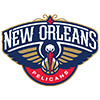Vig - short for "vigorish," a yiddish word synonymous with "rake" or "juice." It's the Sportsbook's take when bets are placed. For example, when betting a game against the spread, you must risk $110 to win $100 no matter which side you take. Therefore the Book pays out $100 to the winner, but takes $110 from the loser, keeping $10 in profit. That $10 is the "vig" or the rake. The vig can vary depending on the Sportsbook, the sport or the type of bet. To be a profitable bettor, you must win enough to overcome the vig. On bets against the spread, you need to win 52.38 percent of the time just to break even.
To understand this, imagine you made 100 $1 bets over the course of a season. If you won 53 and lost 47, you'd have won $53 and lost $47 for a profit of $6. But you'd have lost another $4.70 because, remember, you risked $1.10 to win $1. By winning 53 percent of the time, you're therefore up $1.30 ($6 minus $4.70.) Had you won 52 percent of the time, you'd have won $52 and lost $48, for a profit of $4. But you also lost another $4.80 due to the vig, putting you at minus 80 cents. So 53 percent is slightly profitable, while 52 percent is a slight loss, and the break-even is 52.38.
Rake - see "vig" above.
Juice - see "vig" above.
Favorite - the team that's expected to win and on which you must give away points (or odds) if you chose to bet it.
Chalk - see "favorite". Can also mean the obvious play,
Underdog - or "Dog" - the team that's expected to lose and on which you will receive points (or odds) for betting on it.
Sharp - an experienced bettor or professional gambler, someone who presumably knows what he's doing,
Square - a recreational bettor or an amateur, an average Joe.
Spread - The spread is the number of points the favorite gives to the underdog to make it an even bet. For example, if the Steelers are eight-point favorites at home over the Raiders, the spread is eight points in that contest. That means if you bet the Steelers against the spread, and they win by only seven, you lose the bet. If you bet the Raiders and they lose by only seven, you have won the bet or "covered" the spread. If you bet the favorite against the spread, they must not only win, but win by a bigger margin than the spread for you to win the bet. If you bet the underdog, you win one of two ways: (1) If the underdog wins the game outright; or (2) If the underdog loses the game, but by a margin of less than the spread. If you bet the underdog, and they lose by a greater margin than the spread, you have lost the bet.
Line - see "spread" above
Number - see "spread" above. Also can refer to a game "total".
Total - The total is the number of points scored by both teams combined in a particular game. You can bet the "under" if you think the game will have fewer points than the the Sportsbook's listed number, or you can bet the "over" if you think the game will have more points than the number. For example, if the Sportbook's total in the Steelers-Raiders game is 48, and you bet the over, you're betting the teams combine for more than 48 points. If the Steelers win 30-10, you would lose that bet, since they scored only 40. If the Steelers lose 30-27, you'd win that bet because they scored 57. The total is independent of which team wins or loses - it's simply the amount of points scored in the game.
Over/Under - see "total" above.
Laying points - If you're laying points, you're giving up points because you took the favorite.
For example, if the Steelers are seven point favorites over the Raiders, and you took the Steelers, you could be said to be "laying seven" with the Steelers.
Laying wood - see "laying points:"
Cover - A team is said to cover the spread if either (1) it is favored and wins by a greater margin than the spread, e.g., if the Steelers are favored by 10 over the Raiders, and the Steelers win by 14, they can be said to have "covered the spread"; or (2) it is an underdog and either wins outright or loses by a margin of less than the spread, e.g., if the Raiders are underdogs by 10 and the Steelers beat them by seven.
Backdoor Cover - A backdoor cover typically describes a scenario where the underdog scores a late touchdown that's meaningless for purposes of deciding the actual game, but that changes the result against the spread (ATS). For example, let's say the Steelers were 14-point favorites over the Raiders and are leading by 20 with one minute left in the game. The Raiders mount a drive and on the last play score a touchdown and kick the extra point to cut the final margin to 13. The Raiders had no chance to win the game on that final drive, but their last-minute touchdown allowed them to cover the spread. Anyone who bet the Steelers minus 14 lost money, and anyone who had the Raiders plus 14 won money as a result, when the Steelers had the game salted away and were set to cover before the meaningless last-second score.
Bad Beat - Similar to a backdoor cover, but a bad beat describes an even unluckier and less foreseeable loss against the spread. For example, if you had the Raiders plus seven against the Steelers, and in the last minute, the Raiders were down only six and driving into Steelers' territory with a chance to win the game, but Derek Carr gets sacked, fumbles and the Steelers return it for a TD to win by 13. In that case, the Steelers would cover, but it was a "bad beat" if you had the Raiders.
Moneyline - The money line is an alternative way to bet on games wherein instead of getting points with the underdog, you get odds. Or instead of laying points with the favorite, you're laying odds.
For example, if the money line is -400/+350 on the Raiders-Steelers game, you can choose one of two bets: (1) Bet the Steelers to beat the Raiders, only for every $100 you bet, you will win only $25 if the Steelers win; or (2) Bet the Raiders to beat the Steelers, and for every $100 you bet, you'll win $350.
You don't have to worry about the margin of victory in this case, only who wins the game outright. But if you take the favorite (the team more likely to win) you risk a lot to win a little. If you take the underdog (the team less likely to win) you risk a little to win a lot, but it's less likely to happen.
You might notice that you're risking 4:1 with the Steelers and only getting 3.5:1 with the Raiders. That's by design, or course, and it's the way in which the Sportsbook exacts its vig on moneyline bets, i.e., you have to lay slightly steeper odds on the favorite than you get with the underdog.
The way the moneyline makes the most sense is to base it on units of 100. So -400/+350 means -400:100 and +350:100. Of course, you don't have to bet $100, it just makes the ratios easier to understand. If you bet $40 on the Steelers in this case you'd be risking $40 to win $10. And if you bet $10 on the Raiders, you'd be risking $10 to win $35.
True Odds - the payout you should get for your expected return to be zero over the long haul, i.e.. neither a profit nor a loss. For example, the true odds on a coin flip are 1:1, i.e., if you doubled your money if it came up heads, but lost it if it came up tails. In the long run, with a fair coin, you would break even. This would be a fair bet. It can also be thought of as the vig-less odds, wherein, for example, you'd only need to win 50 percent of your bets to break even against the spread rather than 52.38 with the vig,
Pick 'em - a game where the point spread is zero, i.e., the teams are deemed equally likely to win in the particular venue in which they're playing that day.
Even-Money - An "even-money" bet means you're risking exactly as much as you stand to profit. If I bet $100 on the Steelers at "even money" that means I'll get $100 profit if I win the bet.
Push - A tie. If the Steelers are favored by seven over the Raiders, and the Steelers win by seven, it's considered a "push," meaning all bettors get their money back, and the Sportsbook is deprived of its rake.
Parlay - A parlay is a bet on more than one separate game or total (you can actually parlay games across different sports) wherein you have to win every leg of the parlay to collect. For example I might parlay the Steelers minus 10 against the Raiders and over 48 points total in the game. If the Steelers win 30-10, the Steelers have covered the first leg of the parlay, but I missed on the second one, the total, so I would lose the entire parlay. In order to win a two-leg (or two-team) parlay you have to win both legs. The compensation for winning a parlay is an increased payout. Typically a two-team (or two-leg) parlay pays out 2.6:1. So If I bet $100 on the Steelers and the under in the example above, I'd win $260. For a three-team parlay, it's 6.5:1, but you must win all three legs. Payouts as you add more legs to your parlays can be found in this chart.
The downside to a parlay is on 50/50 bets, you have a one in four (25%) chance to win both bets. Accordingly, to get true odds you'd be paid 3:1, but you can see you're getting only 2.6:1 on the two-leg parlay. That's how the Sportsbook gets its vig on parlays - it pays out less than true odds. Parlays can be profitable if there's correlation between the two legs, e.g., if you believe a strong defensive team, the Jaguars, is only likely to cover against a strong offensive team like the Steelers if they keep the score low, you might parlay the Jaguars and the under. Instead of two separate 50/50 bets, both of which have to come in, you might feel you have a 70 percent chance of the Jaguars covering, assuming the under, a 50/50 proposition, hits. If that's the case, then instead of 1 in 4, that outcome is closer to 1 in 3, and the 2.6 to 1 (1 in 3.6*) is more than enough compensation for your risk.
* People trip up on this sometimes, but a one of four chance requires a 3:1 payout for true odds, not 4:1. One in four is the same as a 25 percent chance. If one side has a 25 percent chance, the other has a 75 percent chance. Accordingly the ratio of one side to the other is 3:1. A 4:1 payout implies a 20 percent chance.
If one parlay leg pushes, i.e., results in a tie, then the parlay is reduced down by one leg, i.e., if it would be a three-team parlay, but one of the games is a push, so it's knocked down to a two-teamer. If it was a two-teamer, it's pushed down to a one-team bet against the spread.
Key Numbers - in NFL games, key numbers are seven and three, for example, due to the amount of points awarded for touchdowns and field goals. When a point spread moves from seven to 6.5, it's a much bigger deal than if it moves from five to 4.5 because far more games are decided by seven points than five points.
Tease - a tease is similar to a parlay in that you have to win multiple legs to win at all, but instead of getting a bigger payout (as in a parlay) you get extra points. For example a two-team tease gets you six extra points on each team (or total) and a three-team tease gets you 10 extra. To illustrate, if the Steelers are favored by six over the Jaguars, and the Raiders are getting three from the Chargers, I can tease the Steelers down to a "pick em" and the Raiders up to nine point underdogs. If the Raiders lose by only seven and the Steelers win outright, I'll have won my tease, but I only get paid even money for it, i.e., I don't get increased odds like a parlay because I got the extra points instead.
The amount of points you get on teasers varies not only based on the number of games you tease, bit also on the particular sport. For more, click here.
Nickle - $500
Dime - $1,000
Quarter - $25
Half - $50
Dollar - $100
Take back vs. Win - If I bet $100 on the Steelers with the moneyline to with $25, and the Steelers win, I've won $25, but I take back $125, i.e., I obviously get to keep my initial $100 and my $25 profit. If I bet $100 on the Raiders moneyline to win $350, I keep my initial $100 plus my $350 profit.
Overlay - A situation where the bettor has better than true odds of winning, e.g., if the entry fee for a contest is $10 for a $100 prize, and there are only nine people in the contest. The bettor has a 1 in 9 chance of winning 10 times his money. In other words, the house is paying rather than taking a vig in that case,
For more on these terms and a few others, click here.






































